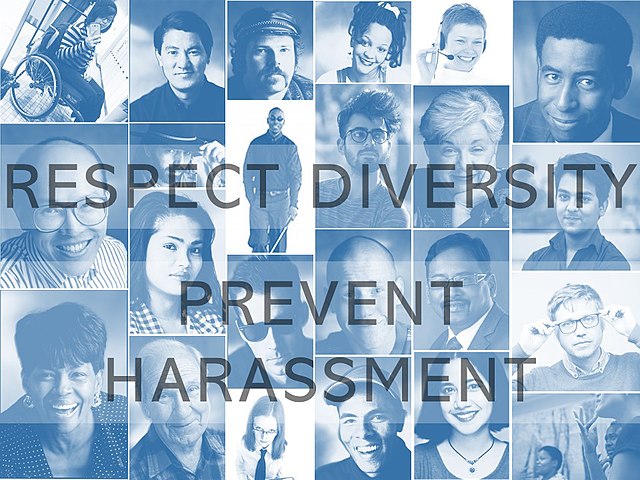‘Bro Culture’ has been known to have toxic tendencies and behaviors, but how does that show in the workplace?
by Kendyn Beaudoin-Clark
October 2, 2023

Since the beginning of time, the existence of bro culture has been prominent. Whether it is in the workplace or otherwise, men have majorly been seen and portrayed as leaders, bosses, workers, researchers, etc. that have strong egotistical, toxic, obnoxious relationships; the technology sector has been nothing short of this concept. The tech industry is very broad, but specializes in a few main areas: electronics, software, computers, artificial intelligence, video games, information technology, and other things related to technology. It is seen as one of the “most attractive growth investments in an economy” (Frankenfield, 2022). Despite its massive growth over the past several decades, it is seen as one of the most exclusive industries towards women, people of color, and minorities in general. Due to the power of a successful sector lead by typically white, cisgender men, technology workplaces are prioritized in society and can seem, and be, untouchable. The prevalence of “Bro Culture” within the technology sector encourages gender and race inequality, which can create exclusive and hostile work environments that threatens progress and innovation in the industry.
What is bro culture?
Bro culture lacks an official definition but is seen as a subculture of young men who tend to surround themselves with similar individuals that find enjoyment in partying. NPR clarifies that a “bro” isn’t necessarily white (Demby, 2013). There are strong historical roots of fraternity culture engrained into bro culture. Fraternities are stereotypically seen as a cultural organization that promote a lifestyle of heavy drinking and misogyny, which leads to high rates of sexual assault. This stereotype is not far from the truth, as fraternity men were found to be “three times more likely to commit rape than other men on college campuses” (Foubert, 2013). These characteristics have a large likelihood of carrying into the workforce, especially industries such as tech that are dominated by men. In 2015, a group of female tech executives and investors surveyed 200 women in Silicon Valley that have seniority at their workplace. The results found that sixty-six percent had been excluded from events of importance due to their gender, and sixty percent had received “unwanted sexual advances in the workplace” (Kolhatkar, 2017). Kolhatkar reported that according to a former Tesla employee, there were more men named ‘Matt’ than total women in the workplace, which was less than ten percent (Kolhatkar, 2017). Aside from these specific examples, it is extremely common for women to feel unsafe in male-dominated fields due to predatorial behavior by their coworkers.

This environment of inequality has steered women away from pursuing these types of careers. As of 2022 in the United States, women hold a disproportionate twenty eight percent of computing and mathematical roles while they make up forty seven percent of the total United States workforce (White, 2023). For the women that push their way into the industry, the barriers only continue. In technology, promotion gaps and pay gaps are very real. In a 2022 report, eighty-six women were promoted to manager per one hundred men throughout all workplaces. This number scarily drops to fifty-two women per one hundred men in the technology sector alone (White, 2023). As for pay gaps, women are underpaid compared to their male colleagues in all sectors including technology. Thirty-eight percent of women report being unsatisfied with their salary compared to thirty-three percent of men. On average these unsatisfying salaries are approximately sixty-nine thousand, compared to eighty-one thousand per year, respectively (White, 2023). These significant differences in wages are clear evidence of disproportionate treatment towards employees that do not identify as male. An article by CIO magazine highlights the various types of subconscious inequality women may experience in the tech workplace, which include gaps in employment, promotions, degree level, retention, representation, equity, workplace culture, and leadership (White, 2023). There is statistical evidence for all of these issues listed in the article here. Bro culture does not typically work to make progress within these areas of inequality.
Similar to gender, race inequality in the workplace has only been exacerbated by bro culture. People of color and minorities “are much more likely to be overqualified for their jobs than white counterparts” (Eddo-Lodge 2017). This fact is the tip of the iceberg of the struggles people of color go through in order to be successful in their jobs. In leading tech firms in Silicon Valley, PBS reports that on average sixty percent of employees identify as White, while only eight percent identify as Latinx and seven percent as black (Woodruff, 2016). These low diversity numbers are heavily involved with bro culture, which is umbrellaed under our societal standards which include a history of racism, misogyny, and white supremacy. True diversity is key for companies that are looking to promote innovation and free thinking. Cultural diversity in the workplace has positive effects, such as having various ways of thinking that lead to new perspectives being introduced and seen. Different perspectives are not considered as much when every employee has similar cultural values and upbringings. In order to not have a large culture shock when going international, all types of companies can benefit from more diverse teams. Along with that, a more diverse group of employees allows them to educate others on their respective cultures, which leads to more well-rounded and thoughtful citizens. While being beneficial for the company, this leads to higher rates of employment for minorities which helps the economy as well. These positive benefits will be hard to reap while bro-culture continues to be prioritized.

Toxic work environments are proven to decrease job productivity.
Another negative quality of bro culture is the hostile work environments it creates in any industry, technology included. Bro culture fosters toxic work environments which can be uncomfortable and detrimental to employees mental and physical well-being, which hinders job productivity. According to a study, “it has been proven that ostracism, incivility, harassment and bullying have direct negative significant effects on job productivity, while job burnout was shown to be a statistical significant mediator between the dimensions of a toxic workplace environment and job productivity” (Anjum, A. et al, 2018). All of the characteristics described have been known to be part of bro culture workplaces in one way or another and are traditionally aimed at marginalized groups. The main group refuting the idea that bro culture is toxic is “bros” themselves. These powerful men at senior levels are generally interested in keeping their workplace culture where they are comfortable, majorly male, and white, while continuing to sexualize their female colleagues. Not enough progress has been made diversifying the technology sector because of this concept. As any jobseeker may know, referrals are crucial to job opportunities. Most people who get into Silicon Valley come from a predominantly white background, and this becomes a cycle. White people are likely to refer their white friends, and there must be an intentional stopping of this cycle in order for change to happen (Perales, 2017). By implementing diversity and putting a stop to bro culture in workplaces, the environments would hold much less hostility, be more productive, and allow for more perspectives will be heard.

Without intention, there will be no change
Bro culture is extremely prevalent within the technology sector. This culture of non-diverse workplaces creates hostile work environments, loss of job productivity, and inequal opportunities for those in marginalized groups. Throughout history, men have been seen as the leaders of society. While this ideal may have held truth centuries ago, we have gotten to a point where gender and racial discrimination is unlawful. This is unfortunately not always the case, as marginalized groups continue to suffer in every aspect of life under the patriarchy, specifically focusing on career opportunities in technology. The term bro culture describes typically corporate jobs with majority white men as leaders, with little or no diversity in cultures and gender. This type of leadership is rampant within the technology sector. To close the wage gaps, promotional gaps, leadership gaps, etc., there will need to be intentional efforts put in to see change and truly diversify teams of employees.

References
Frankenfield, J. (2022, January 2). Technology Sector: Definition, 4 Major Sectors, Investing in Tech. Investopedia. https://www.investopedia.com/terms/t/technology_sector.asp
Demby, G. (2013, June 21). Jeah! We Mapped Out The 4 Basic Aspects Of Being A ‘Bro’. NPR. https://www.npr.org/sections/codeswitch/2013/06/21/193881290/jeah-we-mapped-out-the-four-basic-aspects-of-being-a-bro
Foubery, J. (2013, October 9). ‘Rapebait’ e-mail reveals dark side of frat culture. CNN. https://edition.cnn.com/2013/10/09/opinion/foubert-fraternities-rape/
Kolhatkar, S. (2017, November 13). The Tech Industry’s Gender-Discrimination Problem. The New Yorker.https://www.newyorker.com/magazine/2017/11/20/the-tech-industrys-gender-discrimination-problem
White, S. K. (2023, March 13). Women in tech statistics: The hard truths of an uphill battle. CIO. https://www.cio.com/article/201905/women-in-tech-statistics-the-hard-truths-of-an-uphill-battle.html
Eddo-Lodge, R. (2017, September 27). ‘You’re talked to as if you are a junior’- employees on workplace racism. The Guardian. https://www.theguardian.com/inequality/2017/sep/26/employees-on-workplace-racism-under-representation-bame
Coote, G. (2014). The Effects of Cultural Diversity In The Workplace. Journal of Diversity Management, 2(9), https://www.clutejournals.com/index.php/JDM/article/view/8974/8934
Anjum, A., Ming, X., Siddiqi, A. F., & Rasool, S. F. (2018). An Empirical Study Analyzing Job Productivity in Toxic Workplace Environments. International Journal of Environmental Research and Public Health, 15(5). 10.3390/ijerph15051035
Perales, N. (2017, September). Blinding White in the Valley of The Bros. ColorBloq https://www.colorbloq.org/article/blinding-white-in-the-valley-of-the-bros
Woodruff, J. (2016, January 15). How Silicon Valley is Trying to Fix its Diversity Problem. PBS News Hour.https://www.pbs.org/newshour/show/how-silicon-valley-is-trying-to-fix-its-diversity-problem


